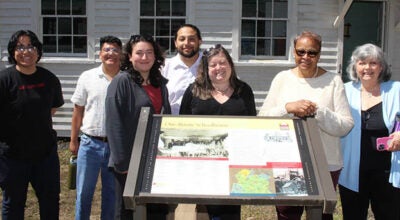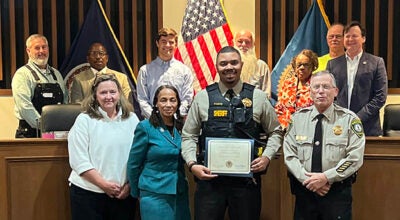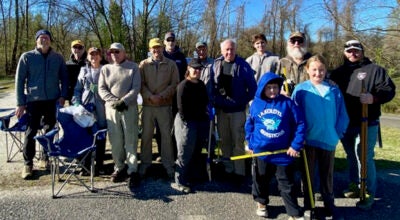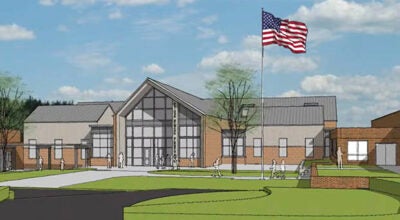Main Street Needs Buy-In From The Entire Community
Published 4:37 pm Tuesday, October 11, 2011
FARMVILLE – A successful Main Street program relies on power through an effective, sustained group performance, not virtuoso solos, Jeff Sadler, with the Virginia Main Street program, told the Farmville Area Chamber of Commerce on Monday.
“Not every one of our 25 Main Street communities is a high-performing organization or high-performing town. The ones that take a proactive approach to figuring out what they want and work towards it and get a lot of buy-in from lots of different folks are very successful. And other ones are always waiting for someone to do it for them,” Sadler said. “And that's the big key-that it takes a lot of people.”
Farmville is one of four Virginia communities recently admitted to the statewide technical assistance program that now totals 25 communities and state and local officials are beginning craft the way Farmville will most benefit from membership.
A component of the commonwealth's Department of Housing and Community Development, Virginia's program is based on the four-point National Main Street program's approach: design, organization, promotion and economic restructuring.
Building an organization that can sustain the work long-term is absolutely crucial, Sadler told chamber members, because “it is a comprehensive and incremental approach to the revitalization. It's not about doing one big project and letting it go. It's about doing lots of small projects.”
A series of projects over a period of years that, if piled on even the most dedicated shoulders, will wear those shoulders down and out.
“You have to have an organization that isn't based on the power of one person's personality or three or four of the big business owners (that) all get together and say, 'This is what we need.'
“It's about taking the entire community and building a system that ten years from now will keep moving and keep moving and get as many people involved as possible,” Sadler said. “That's pretty key right there-getting a lot folks involved. Because it's all volunteer effort, for the most part. I'm sure we've all been part of organizations where, whether it's your church or somewhere else, there's always one person who says, 'Well, I'll do it.'”
There is immediate return for such organizations, thanks to that one person's dedication, but there are ultimate costs.
“Eventually that person gets burned out, or they have kids, or they have grandkids, or they get sick or they move away or any number of things,” Sadler said, “and if you don't have a lot of involvement from all sorts of, we call them stakeholders, but lots of different people you can't keep it moving.”
Virginia Main Street is the state's primary downtown revitalization program, the only one focused solely on historic commercial districts.
“What it strictly means is the area of the community that was the historic business district. Not necessarily that every building is a historic building…” Sadler explained. “The core of the community at its inception and during its growth period…”
That means some businesses regard themselves as on the outside looking in.
“One of the things we hear is, 'Well, I'm not in the Main Street district. I feel left out.' The reason we focus on a very defined district is because it is the core of the community, it's the hub that holds all the spokes of the wheel together.
“And without the hub all those spokes would just fall out and go wherever,” Sadler said, noting that a strong downtown helps all the spokes-the businesses on roads coming into town-because more and more people are attracted to the downtown area and the businesses on those “spoke roads” see more and more traffic, more and more potential customers.
The downtown area is also the densest part of most business communities, with businesses right next to each other, 10 or 15 on a block, he added.
“But it benefits the entire community,” Sadler said of the rippling positives of a successful Main Street program.
Sadler stressed the individualistic mantra intoned throughout the Main Street paradigm-focusing on a community's unique assets and building on them.
All 25 communities in Virginia Main Street are different and Sadler stressed, “that is what we really try and do with Main Street. Focus on what are the assets that you have and let's build with your assets. It's not about 'here's the play-by-play of what you do to go through and revive your downtown,' because every downtown is different, every community is different, and so you need to identify that.”
Something Sadler has already identified about Farmville is that the town has a good base from which to build.
“Now there may not be stuff for everybody right now but you'll be getting there and actually,” Sadler said, “you guys have a pretty vibrant downtown, compared to what I'm used to working with, I will say. So you've got it pretty good here.”
And, he added, “I'm happy to say it's looking more and more pedestrian-friendly every time I'm coming through town.”
One of the things Virginia Main Street will do is spend time in Farmville, looking at the businesses that are here but, more specifically, what businesses are not here but would make a good fit, complementing existing businesses and capitalizing on the community needs.
“Obviously the schools in this area are a great boon to the community. I'm sure there's plenty of folks that don't realize that still but…(towns without them say) we'd kill to have a college in our town,” Sadler said.
But economic restructuring is an essential piece of the Main Street program's puzzle.
“Economic restructuring really is just that, realizing that Farmville's economy right now is different that what it was ten years ago, different than it was 30 years ago,” Sadler explained. “It's certainly different than it was 70 years ago.”
Coupled with that realization is looking forward into the future and asking “what is it going to be in 10 years and 20 years,” Sadler said, “and really trying to keep that in mind and moving forward.”
A successful Main Street initiative, he stressed, is “constantly evolving.”
As a part of the economic restructuring process, Main Street Virginia personnel will be walking the historic downtown district, coming up with suggestions and choices, not mandates.
“Once people's habits have shifted and they're not coming downtown,” he advised, “you have to give them a reason to come check it out.”
And then move to the check-out line, with purchases in hand.





